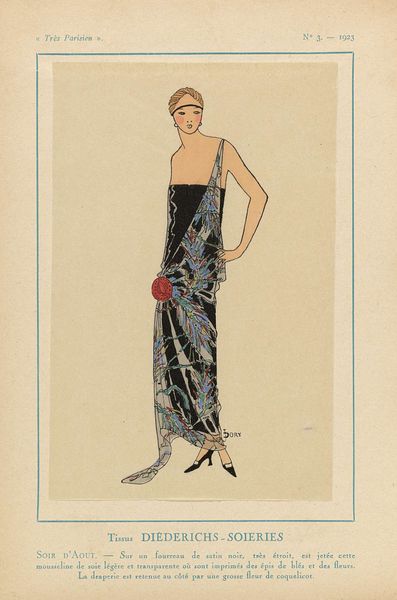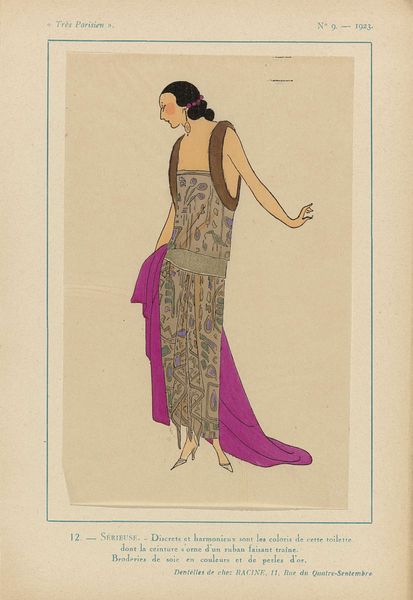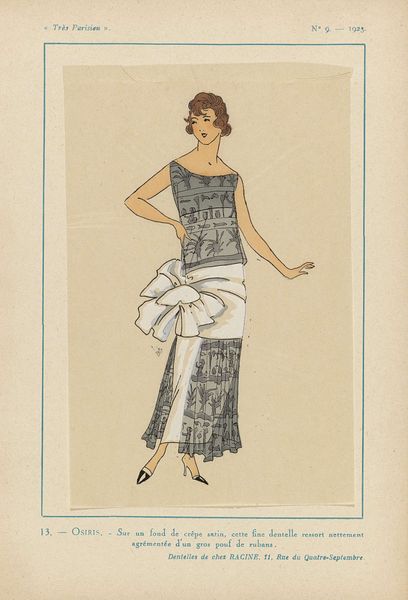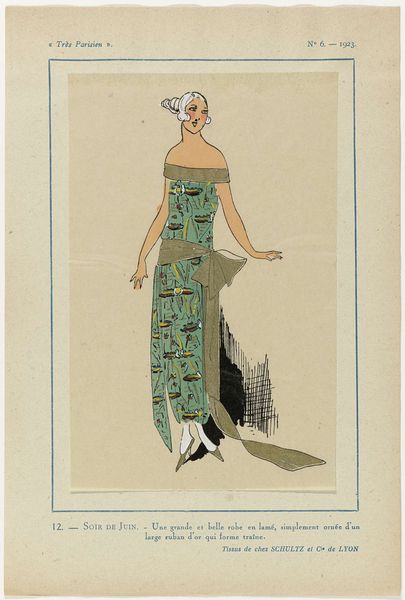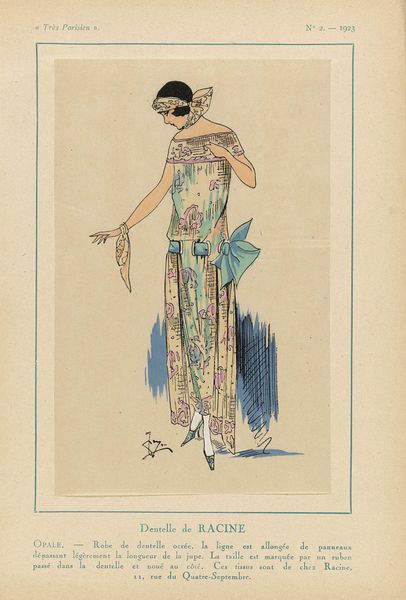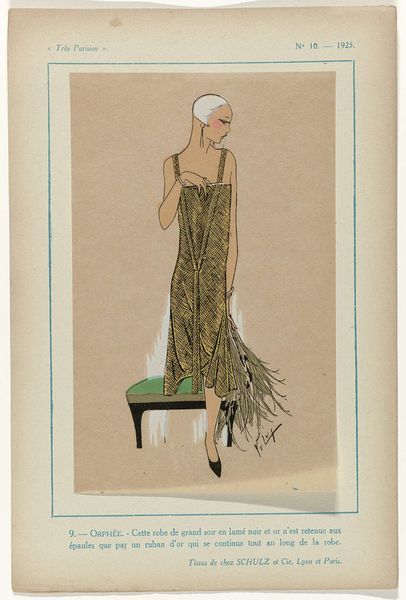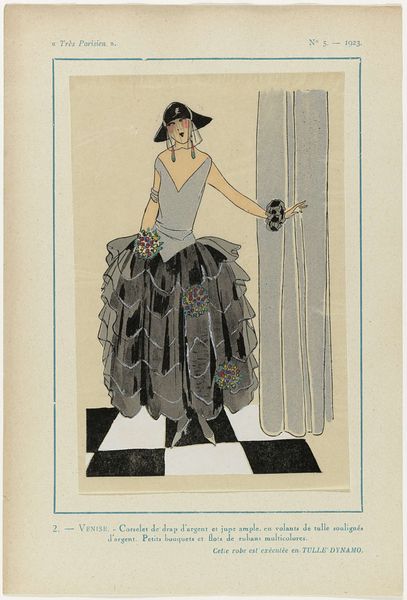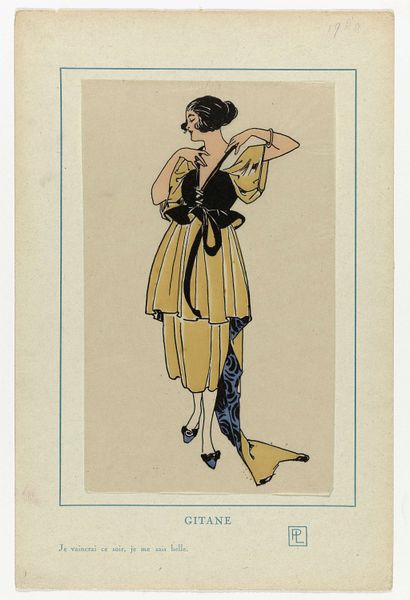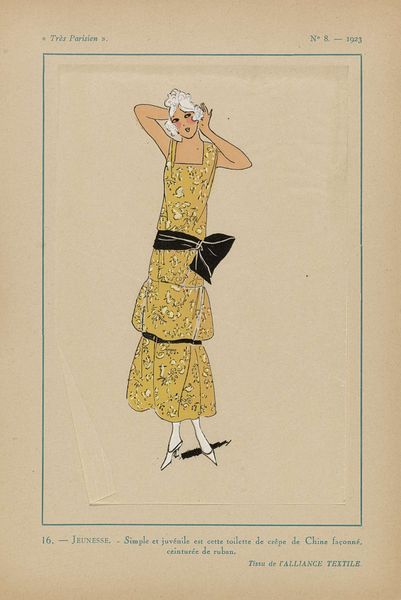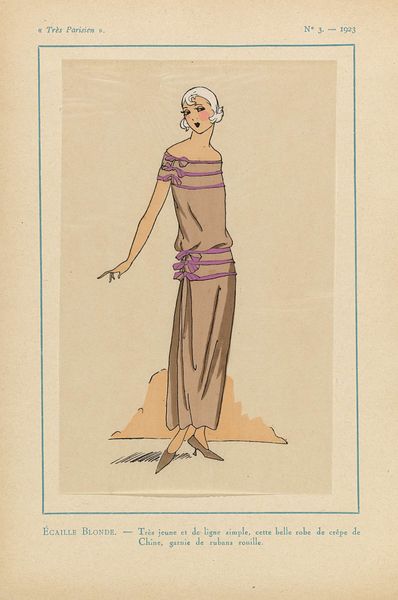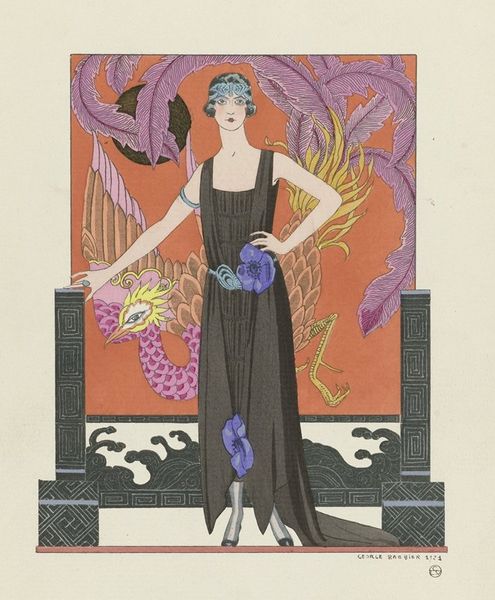
painting, watercolor
#
portrait
#
art-nouveau
#
painting
#
watercolor
#
flat colour
#
watercolour illustration
#
dress
Dimensions: height 271 mm, width 181 mm
Copyright: Rijks Museum: Open Domain
Curator: This watercolour illustration, created in 1920 by an anonymous artist, is titled "Très Parisien. La Mode, Le Chic, L'Élégance". Editor: The first thing that strikes me is the stylized simplicity, a graceful elongation and use of flat color that gives it such a distinct and iconic quality. Curator: Absolutely. Its title gestures toward the height of Parisian fashion. Given the "Bacchante" inscription, and the depiction of grapevines around her dress, it reads as a rather subversive image, especially considering the era's shifting social norms for women. It presents an ideal woman, maybe even a divine woman. Editor: Yes, divine. Looking at the formal composition, the elegant figure poses dynamically, offset by minimalist line work suggesting a classical pillar. This highlights a kind of constructed identity; we see artifice layered on top of historical reference, all presented with such bold assured strokes. The composition echoes art nouveau ideals, while streamlining form and silhouette. Curator: Precisely. This isn't merely a fashion plate. This illustration leverages historical and classical allusions to reflect the evolving image of women in the 1920s. It mirrors the era's flirtation with mythology as women moved further into public life, pursuing careers and autonomy outside of the home. This era aimed to reflect ideals such as pleasure, abundance and sensuality. Editor: I'd add that it showcases art's remarkable power to construct desire. Through deliberate formal choices and stylistic elements, it encapsulates an era's dreams and aspirations. And like the woman represented, it evokes strength. Curator: Thinking about art as a powerful force for imagining and reflecting societal transformations, the "Très Parisien" manages to show us how fashion intersects with liberation. Editor: A fascinating exploration of form and its intricate relationship to epoch and ambition, elegantly presented in such an assured aesthetic statement.
Comments
rijksmuseum about 2 years ago
⋮
Très Parisien promoted itself as chic and elegant. Between 1920 and 1936 it presented creations by such couturiers as Chéruit, Premet, Philip et Gaston, and Lanvin. The young, svelte models are all ultra-modern, shown talking on the phone, smoking and playing tennis. The illustrations also show that over the course of the 1920s, skirt lengths had risen to just below the knee, before dropping back down to calf length in the 1930s. The small plates were printed on transparent paper using a stencilling technique known as en pochoir and then hand coloured; many of them are unsigned. The signature ‘Joujou’ belonged to Germaine Paule Joumard, who was the director of Très Parisien, as well as one of the magazine’s illustrators.
Join the conversation
Join millions of artists and users on Artera today and experience the ultimate creative platform.
